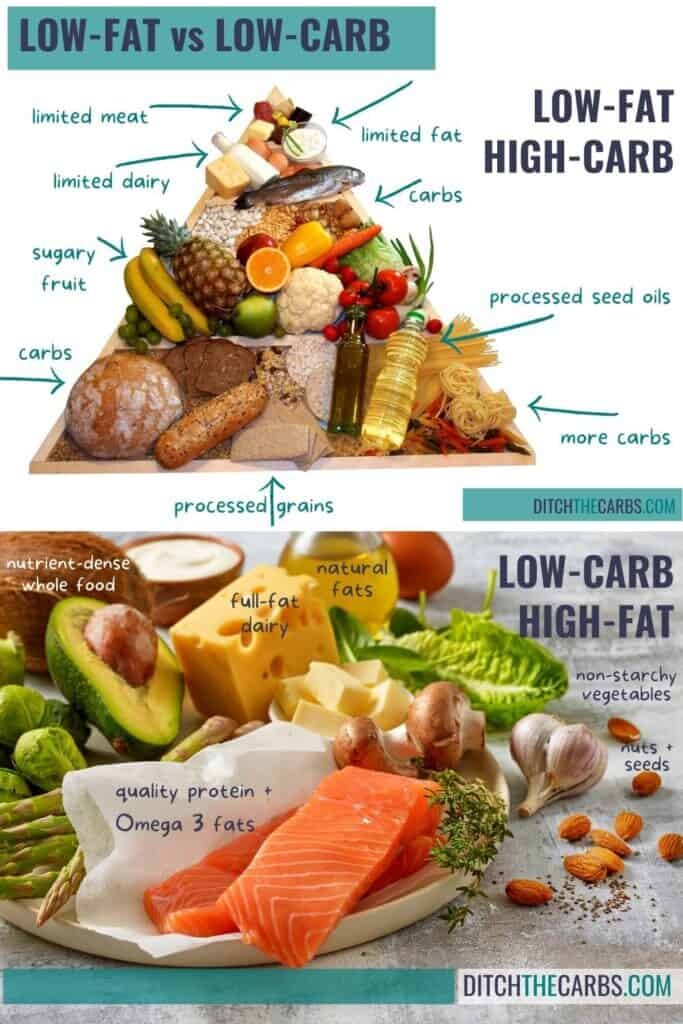Are Processed Food and Environmental Contaminants the Main Cause of the Rise of Obesity?
Josh Hausman pointed me to a fascinating series on the slimemoldtimemold.com blog on explanations for the rise of obesity. The overall title for the series is “A Chemical Hunger.” In this post here, I’ll react to the first three slimemoldtimemold.com posts in the “A Chemical Hunger” series.
I hope you’ll read the slimemoldtimemold.com posts themselves, but let me summarize them to set up my reactions.
The 1st post presents a series of mysteries about the rise in obesity. In brief:
We are a lot fatter than people in the 1890s, but its unclear our diet and exercise are all that much different.
The rise in obesity accelerated from 1980 on, but many of the proposed causes slowed down after 1980 or went in reverse after 1980.
Obesity keeps going up and up and up with no sign of a pause.
As far as carbs, fat and protein, or good and bad carbs, fat and protein go, almost any supposedly bad diet has some group of hunter-gatherers going to the extreme on it. But these hunter-gatherers don’t get fat while living in a traditional way.
Lab animals and while animals are getting fatter, not just humans.
Highly processed food makes lab animals fat in a way that can’t be accounted for by its carbs, fat and protein content or by its caloric content.
People at high altitudes have lower rates of obesity.
There are many, many different ways of dieting. None of the many things that people commonly try are very successful at helping people lose weight.
The 2d post in the “A Chemical Hunger” series argues against several common theories.
Calories In/Calories out is not very helpful; it seems clear there is some regulatory mechanism that makes the effective amount of calories in and calories out very different from what one might think based on one’s conscious choices. Eating huge amounts leads to surprisingly little weight gain. Exercising a lot leads to surprisingly little weight loss.
Fat never had much affect on obesity. And sugar consumption by some measures has been declining since 2000 with little apparent effect in slowing the rise of obesity.
No special diet by itself seems to lead to all that much weight loss compared to the overall increase in obesity that has taken place. And the modest effects that are seen from some special diets often reverse themselves within a year.
The 3d post advances a theory of chemical contamination—both in the environment and within highly processed foods. I’ll summarize the argument. To begin with, we know medication can have big effects on weight. So the idea that chemicals could be part of the explanation is plausible. (By the way, I wrote about insulin-related medications having that kind of effect in “Evidence that High Insulin Levels Lead to Weight Gain.” But that isn’t the only kind of medication or other chemical that can cause weight gain or loss.) Then the heart of the argument is that chemical contaminants can explain the mysteries laid out in the first post:
There are a lot of chemical contaminants now that weren’t there in 1890 or before.
It is quite possible that some chemicals in the environment or in highly-processed foods have become much more prevalent since 1980.
Short of a big outcry about some chemical, it could easily be getting worse as each year passes in the 2020s.
Hunter-gatherers, whatever they eat—as long as it isn’t highly-processed modern food—are far away from the worst sources of chemical contaminants.
Wild animals and lab animals are exposed to environmental chemical contaminants.
Some lab animals are fed highly-processed foods.
Environmental contaminants would get washed downstream, so that they would hit people lower down in watersheds more. This could help explain why people at high altitudes have less obesity.
Most diets don’t cut out all highly-processed food. And even people on a whole-food diet are exposed to environmental contaminants.
One important mechanism through which environmental contaminants and chemicals in highly-processed food might affect obesity is by disturbing the balance of bacteria in the gut. Because we are only barely beginning to understand the effects of the gut microbiome, it is hard to rule anything out in this regard, and many things are plausible, if unproven. But some environmental and food-additive contaminants may have more direct effects. (Here I include as “food additives” things that are “natural” but put in with much different proportions than in typical whole foods and turn out to be deleterious.)
Reactions:
I have often point out in my diet and health posts that (as highly-processed food is currently formulated), going off sugar requires going off almost all highly-processed food as well. That is one way in which going off sugar is different from just reducing the amount of sugar one consumes. Reducing sugar can easily happen by substituting into highly-processed foods with less sugar but with other bad stuff.
To the extent that highly-processed food leads to more obesity by being especially tasty (“palatable”), as an empirical fact, getting that tastiness usually involves adding sugar (or one of the worse nonsugar sweeteners—see “Which Nonsugar Sweeteners are OK? An Insulin-Index Perspective”). So going off sugar also greatly reduces the danger of eating too much because of addictive tastiness if that is your theory of the rise in obesity, following Stephen Guyenet (who is often quoted in “A Chemical Hunger” posts).
“slimemoldtimemold” persuades me that it is hard to explain the facts of obesity without some important contribution from bad chemicals in the environment and in highly processed food. Wild animals getting fatter and the correlation of obesity with altitude are some of the most telling arguments on that score.
Many of the other arguments are in the vein of saying “There isn’t any other explanation, so it must be chemicals.” I definitely think that is part of the explanation. But there is another factor that could potentially explain the facts: changes in the timing of eating.
When I was a kid in the 1960’s, we weren’t allowed to snack much. Most of the eating was confined to three meals a day. Later on in my life, I heard like most other people about a claim that spreading one’s food out throughout the day would help you lose weight. I think the evidence for this was always weak, and not relevant to what people actually did: add in snacks throughout the day without holding the total amount of food constant at all. As an illustrative calculation, if breakfast starts at 7:30 AM and dinner ends at 6:30 PM, that is an 11-hour eating window. On the other hand, if you sleep 8 hours and eat right after waking and right before going to bed, that is a 16-hour eating window—a big increase.
At this point, I don’t know of any easy data set on changes in the timing of eating. That means there is an important factor in obesity—eating all the time instead of in a short eating window—that we don’t have a good handle on historically. It is plausible that the length of the eating window has gone up over time. It is also possible that it went up a lot since 1980. But we don’t know. It would be great for someone to figure out a creative way to get some data on this. For example, detailed-enough time-diary data might help. Time-use scientists may not have focused the attention of the survey respondents on whether they were eating or not during an activity as much as would be good, but it might be possible to learn something. Until reading these “A Chemical Hunger” posts, I have thought mostly in terms of trying to identify changes in the timing of eating from 1890 or so to now, but it looks like changes in the timing of eating since 1980 are especially important for thinking about the rise in obesity in the last 30 years. And that is a period when some time-diary data exist.
(For all of the hunter-gatherers but the Kitavans, regardless of the daily eating window, there are likely to be periods of the year, or random moments with very little food. That enforced fasting could have a big effect on chronic diseases and weight.)
Suppose for a moment, though, that all of the observed rise in obesity is due to chemicals. Avoiding highly-processed food is the obvious first step to avoid part of that. Supporting research on chemicals that could affect obesity is also an obvious things to do. You could even think of moving to Colorado, as, fortuitously, my wife and I did, to take advantage of the altitude effect. But for most of you, all of those things put together aren’t going to get you to a good weight any time soon. Fortunately, a cure doesn’t always have to come through undoing the original cause. It is also possible to simply counteract one force with another force. To repeat what I have said many times in my diet and health posts, fasting (eating nothing, while drinking water) is a surefire way to lose weight. Enough fasting and you can counteract the upward pull of environmental chemicals you can’t fully avoid. And fasting is much easier when you are eating low on the insulin index when you are eating. (See “Forget Calorie Counting; It's the Insulin Index, Stupid.”) Making fasting easier or harder is the most important way that what you eat matters. I think I have been consistent in saying that the direct effects of what you eat on your weight are modest, if you don’t bring fasting into the mix.
I want to learn much more on the effects of environmental chemicals and chemicals in highly-processed food on obesity. Please put relevant links in the comments or tweet them to me. I think the rest of the “A Chemical Hunger” series goes there. I’ll blog about what I learn.
I have often thought that the area of diet and health and of understanding obesity is an area where a billion dollars from a philanthropist could finance research that could improve social welfare by the equivalent of a trillion dollars. That trillion dollars isn’t at all easy to monetize without facing temptations that, succumbed to, might destroy any possibility of doing that kind of good, but if approached philanthropically, big improvements in people’s lives are available from figuring out how to use improvements in when and what we eat and in our chemical environment to prevent a substantial fraction of diabetes, cardiovascular disease, cancer and other diseases.
For organized links to other posts on diet and health, see:
For example, you might be interested in these posts on processed food and food additives:













